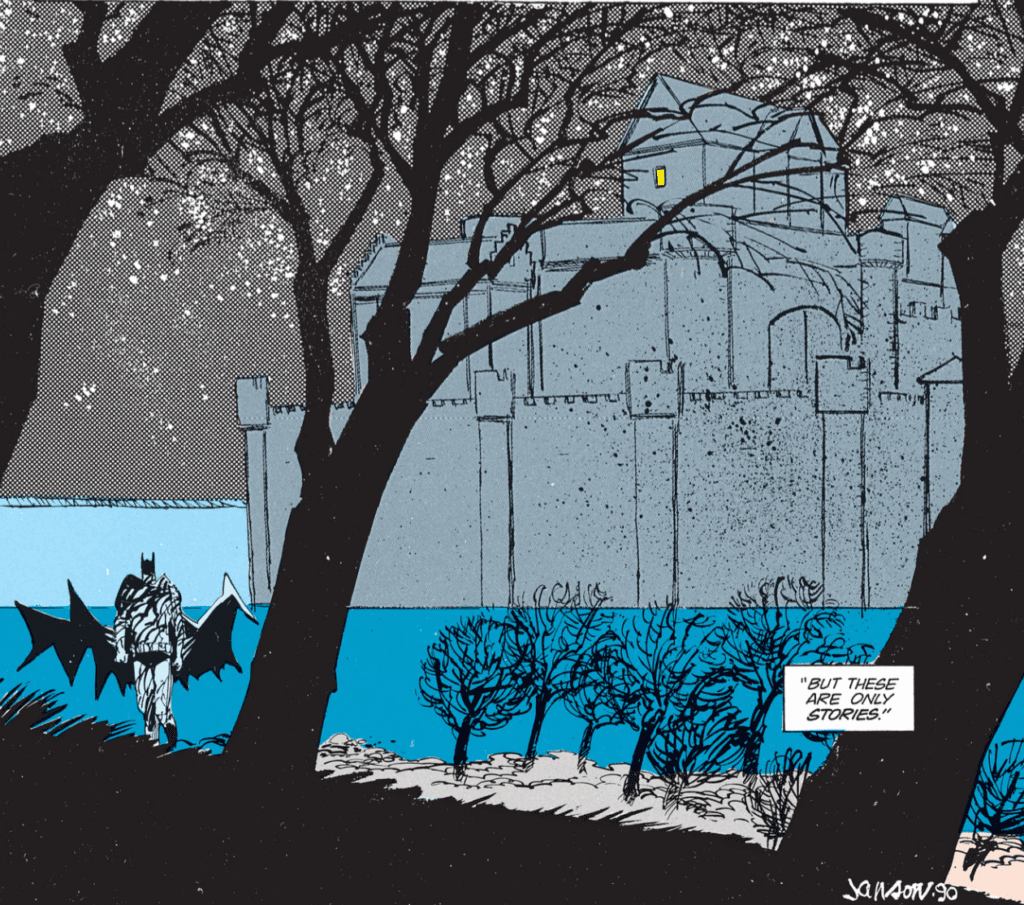During the first half of 1990, two much-beloved creators wrote a five-issue Batman story, Batman: Gothic, alas, 30 years later, it’s hardly spoken of.
Although the story may be 30 years old, beware of spoilers! A few do pop up.
Looking at the casting call, you’d be surprised it isn’t as high up on reader’s lists. You have Writer Grant Morrison, Artist Klaus Janson, Colorist Steve Buccellato, and Letterer John Costanza. By this time, both Morrison and Janson’s names are ones many fans would recognize in the 90s.
BATMAN: GOTHIC ROLL CALL
The year before (1989) Morrison had written Arkham Asylum: A Serious House on a Serious Earth. Thing is, the back cover of Batman: Gothic Deluxe says this is his first Batman story. We’ll agree to disagree and say it’s his first “canon” story. Janson’s name brings up memories of his work with Frank Miller: Daredevil and Batman: The Dark Knight Returns.
Nonetheless, the other creators of Batman: Gothic share a huge spotlight. Batman: Gothic is Buccellato’s first DC Comics work, yet he had been around since 1987 in a multitude of roles. Costanza is a veteran in the comic industry. Having begun his career in 1965, he would go on to letter for Jack Kirby, among many other comic giants. The team behind the five-issue Batman story was one to be trifled with. Question is, why isn’t it held up to high regard as the other great Batman stories?
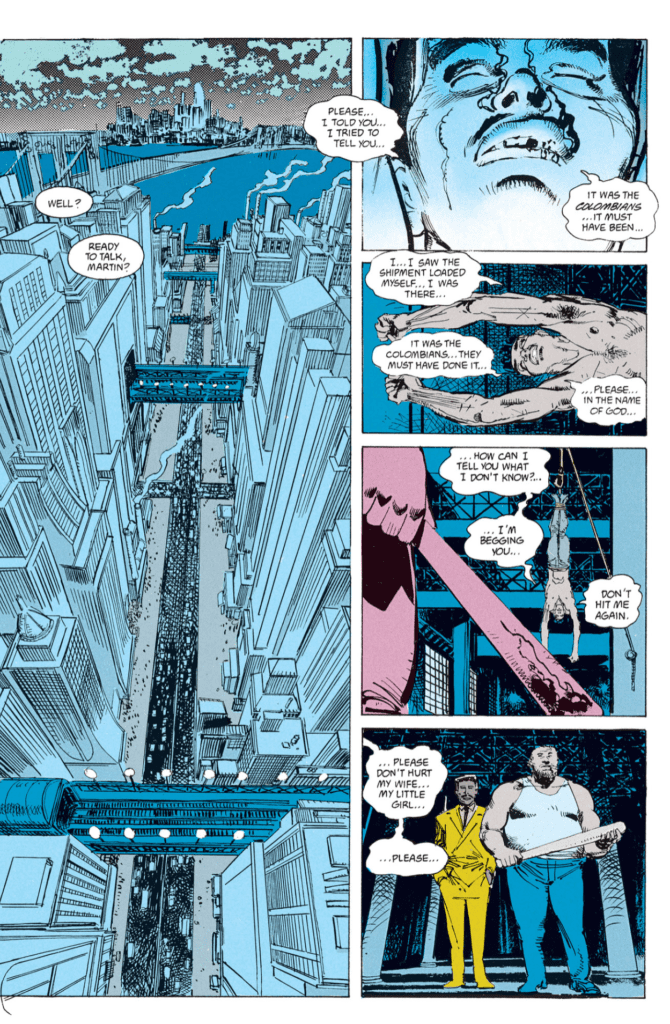
TIMING IS KEY
Much like another Batman story I love and feel like isn’t talked about (Batman: The Cult), it came out during a crucial period. During the late ’80s and early ’90s, a fair amount of now-classic Batman stories came out, redefining the character and his mythos. Plus, Elseworld stories that are well-beloved. So, for Batman: Gothic timing was important, but good timing it didn’t have.
Another factor can be Morrison’s writing and his use of religion, calling it a “Gothic Romance” and myriad use of operas and plays. Morrison leans hard on all these inspirations, stuff that some fans wouldn’t like or could make them shy away. Each issue begins with a playbill that would introduce the “cast,” a quote from a play, and the issues name—thus showing Morrison’s inspiration. Plus, the main villain uses the Riddlers motif, but with a poem.
Morrison’s work back then wore its inspirations on the sleeve more so than now, which accrued him dicey glances from others. Nonetheless, isn’t all stories inspired by others? Plus, one of Daredevil’s (Born Again) most famous stories is heavily influenced by religion.
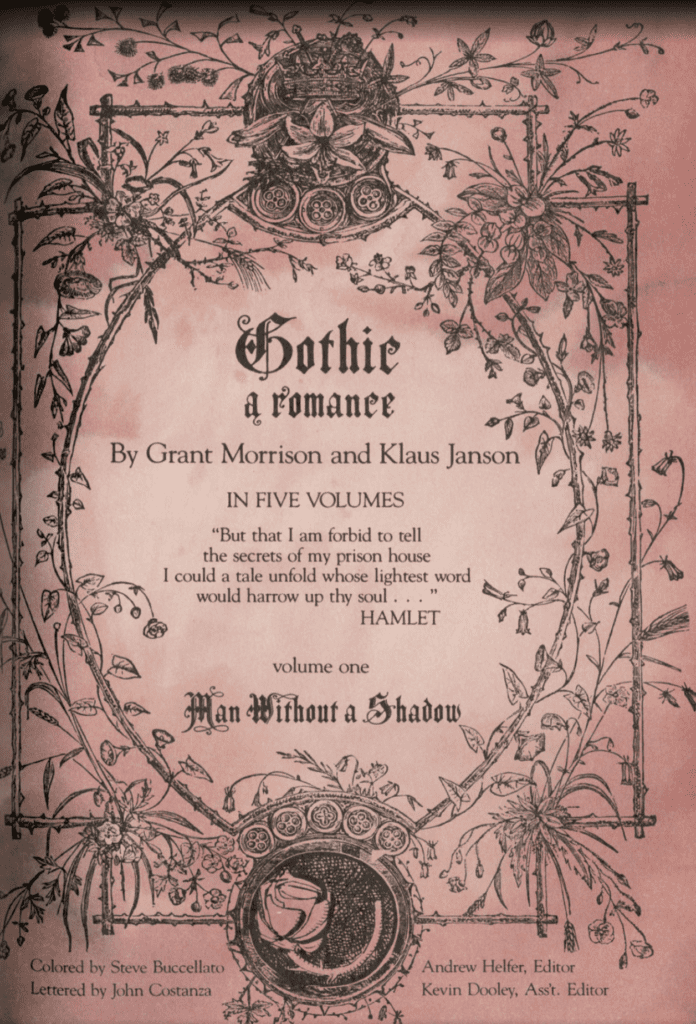
IN THE MIDDLE
Another fascinating fact about Batman: Gothic is its publication history. Batman: Gothic was the second five-part story that ran in 1989’s Batman: Legends of The Dark Knight, with it being issue numbers 6-10. Morrison’s story was perfectly in the middle of other amazing Batman stories; Shaman and Prey. Both these titles were written by long time Batman favorites, Dennis O’Neil and Doug Moench. Meaning, it had an amazing standard to live up too.
Unlike other Batman titles at the time (there were a few), Legends of The Dark Knight focused more on the darker, earlier side of Batman. Usually, this meant it was a more adult heavy series. Plus, this made the series more lenient towards obscure plots, mostly out of the ordinary plotting. This “looser” rule set played into Morrison’s favor, with him tapping into some “non-mainline” matters.
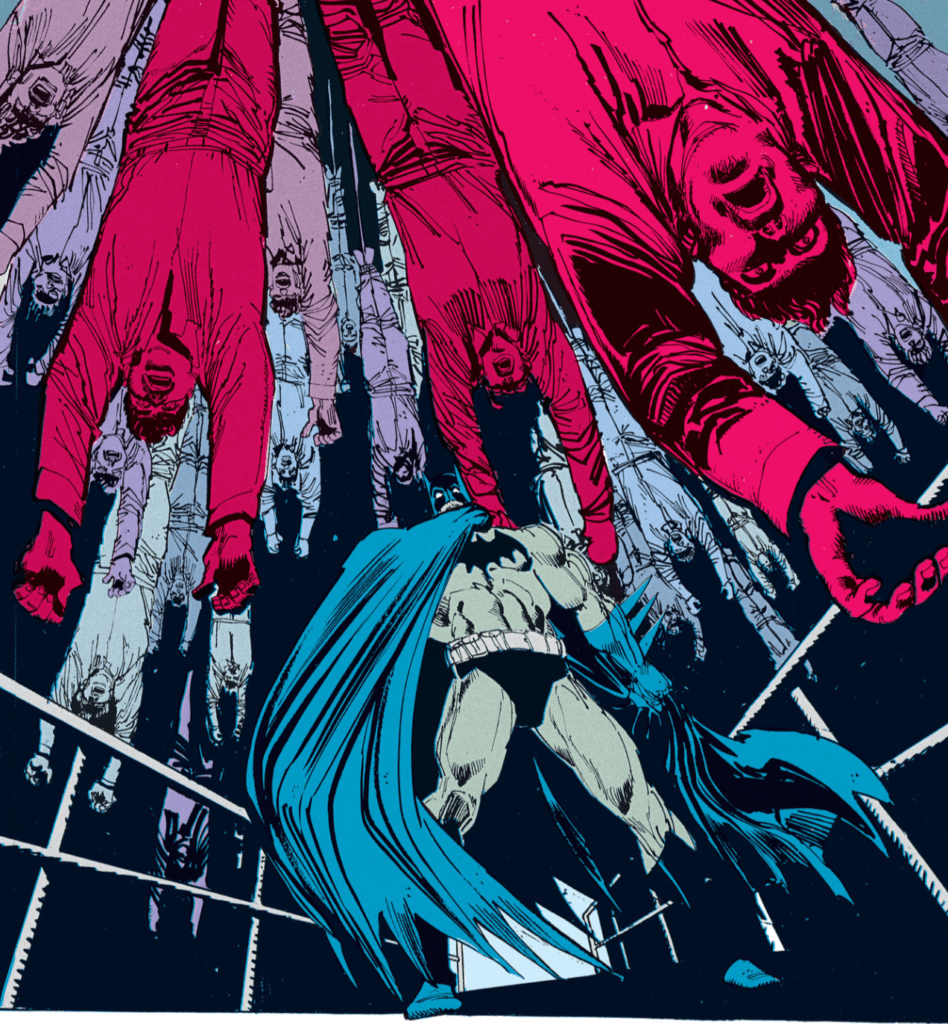
A DEADLY BLAST FROM THE PAST
Morrison quickly introduces a long lost resident of Gotham once thought dead—Mr. Whisper. He also served as Bruce Wayne’s childhood teacher, Mr. Winchester. Yet, his history even goes further back with him being a monk named, Brother Manfred. Having caught the black plague, Brother Manfred sold his soul to the devil for three-hundred years. His arrival back in Gotham marked his ending days.
Much like Scott Snyder’s Batman: Court of The Owls, Morrison weaved Mr. Whisper’s story into the very soul of Gotham and its history. Twenty years past, when Bruce was in school, Mr. Whisper killed seven kids which gained the attention of Gotham’s local mobs. Back then, criminals of Gotham had some morals, plus they didn’t want the heat on them. They set out to kill him, only to find out it’s not possible. So, they drown him.
Nonetheless, twenty years past, and he returns to kill them to pass the time until his plan comes to fruition. For each of these deaths, a note is giving to the victim with a poem with a hint of how they’ll die. Look at it like a better/deadlier Riddler. Knowing their time is up, the criminal families involved go to Batman for help.
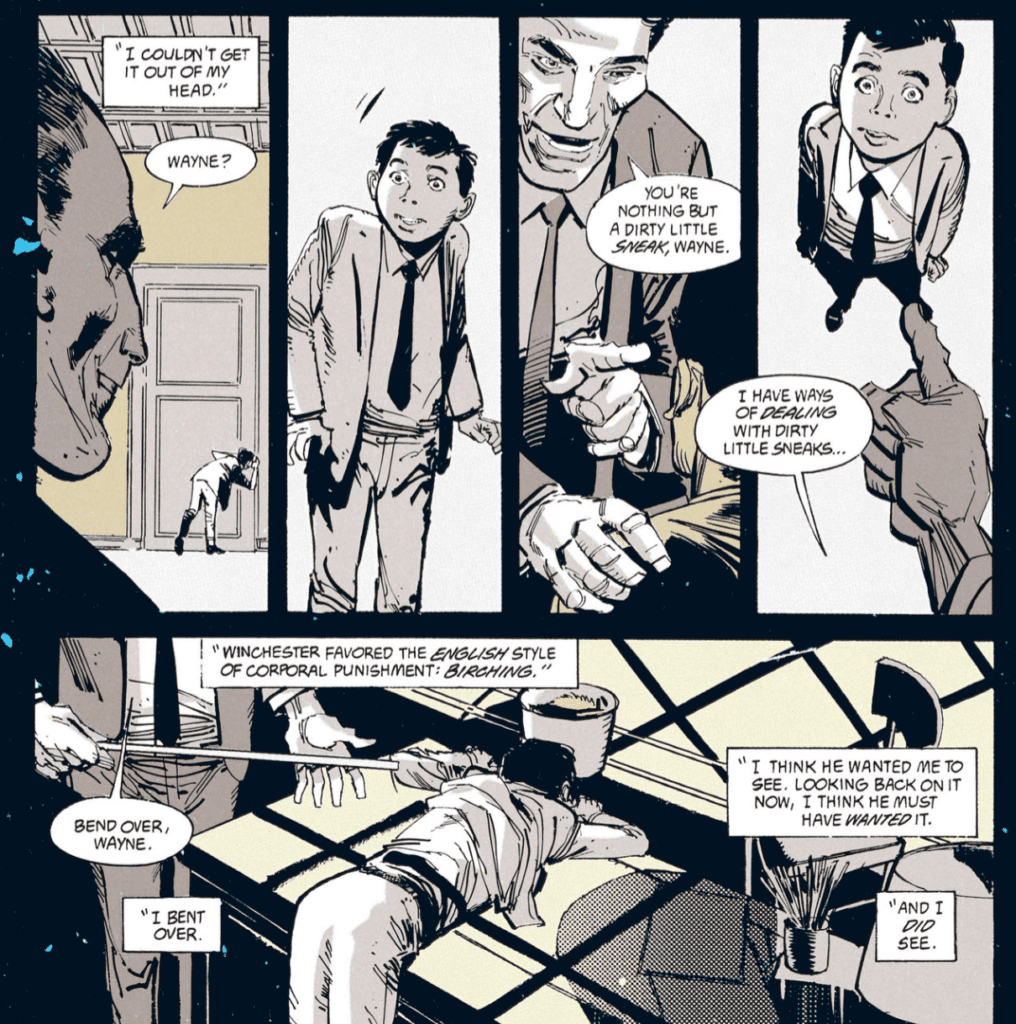
BATMAN: GOTHIC, A GOTHIC ROMANCE TALE
Batman: Gothic deals heavily with religion, yet with a somewhat supernatural feeling. But, at no point does Batman doubt any of it. Nor make light of the situation. Instead, Morrison writes a Batman that knows how to scare the criminals while taking everything seriously. When he sleeps, he has nightmares involving dead children, nursery rhymes, his father, and Mr. Winchester. As all the elements come into play, he makes a trip to Lake Dess to learn of what may be the truth.
Morrison’s plot can be boiled down to a structure he used in his later Batman run, and others too. A personal character that “maybe” immortal comes from Gotham’s/Batman’s past to haunt him and his city. Batman digs into his past to realize that character has always been there. Villian puts him in a death trap; once thinking he is done, they go their merry way with their plans, only for Batman to come back. This reads like Batman: RIP (minus losing his mind), and Court of Owls. Even the inverted theme throughout Batman: Gothic can be seen in RIP. Said inverted theme helps emphasize the religious matter and can be seen with the inverted cross, hanging victims, an inverted Bat-Signal, and Batman’s reflection, to name a few.
Batman: Gothic sets itself apart with how its villain is precisely as he seems. Yeah, in some parts it may not seem true, nonetheless, at the end, Satan returns to claim Mr. Whisper’s heart.
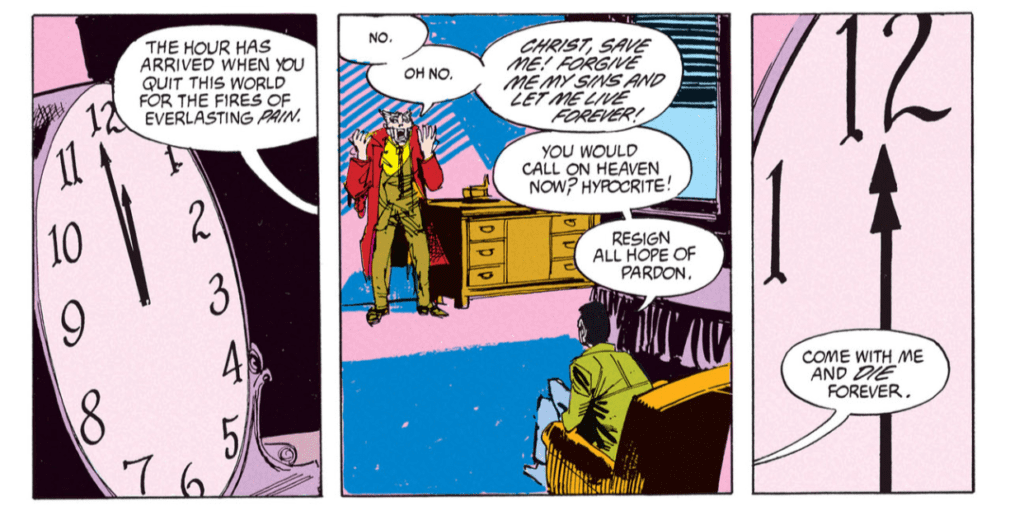
GOTHIC DESIGNS
Batman: Gothic focuses on the big three pieces all good Batman stories revolve around; Bruce, Batman, and Gotham City. Each of these elements is given spotlight via Morrison’s script, yet, even more so by Janson’s art. Whenever a panel focuses on a location, Janson’s art breathes it into life. The city feels as much alive as the characters seen throughout. Be it the gothic architecture, grimy streets, allies filled with sketchy characters, and the tall foreboding buildings. Janson’s Gotham designs are some of the best around.
Another aspect Janson excels at is showing reactions with full faces, or full bodies. When a character is showing tense emotions, Janson gets close to their face to show the fear. He uses this frequently, to amazing effect. This gives him the possibility to show every detail on their face, making the reader feel what they are.
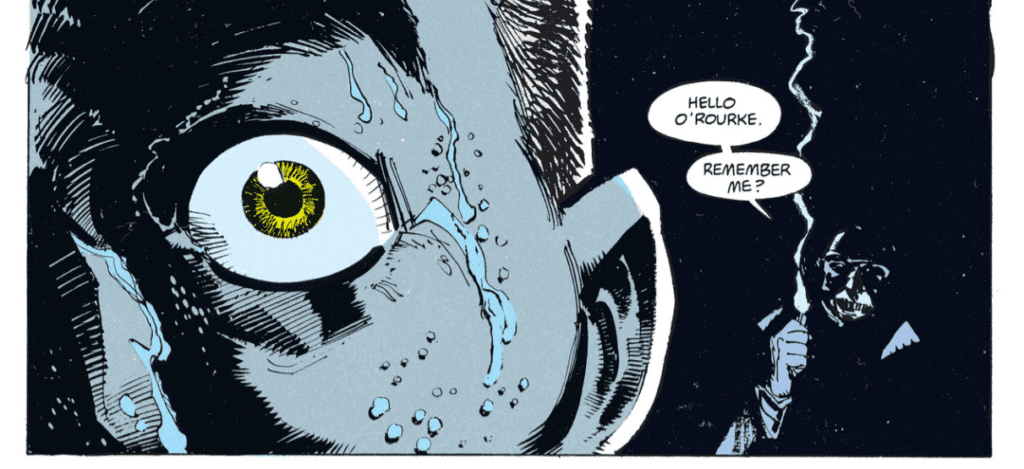
But, what would a Batman comic be without action? Luckily, Janson knows how to catch the reader’s eyes with a clean yet violent style that makes you feel each hit. In these fights, each violent action is portrayed in a panel that beautifully shows the motions, followed by a reaction. In his grasp during the final issue, Mr. Whisper has Batman strapped into a Rube Goldberg machine; because we all know this works out perfectly each time. Thing is when the machine starts, Janson never shows a full shot of it, as a way to keep the reader on their toes. Instead, each mechanism is showed working in a nine-panel grid. This method makes the trap feel deadlier and that Batman may not make it out.

A HEROIC INTRODUCTION
It is interesting how a creative team introduces the titular character and his nemesis in series. Usually, this can excel the storytelling, or make it feel flat. The manner the team introduces Batman in Batman: Gothic is gorgeous. This is due to multiple factors, with Buccellato’s colors standing out greatly. As Batman mostly operates at night, Buccellato keeps Gotham draped in shadows, much like its protector. When we first see Batman, a spotlight flashes upon his cowl while he’s on a building. Telling the reader, “Hey, here he is.” The following panel’s background is a brighter blue, helping show the lights still there.
These two panels exemplify Buccellato’s colors, but the following Batman moment shows how making the colors a little unnatural help even further. Having followed the two criminals, Batman drops down with an epic one-liner showing himself to the criminal he left conscious. He’s colored his usual grey/blue, yet behind him is a thick black that shapes his outline. Nonetheless, the color that catches the eye is the bright red behind him, that honestly shouldn’t be there.
Buccellato’s use of red to amplify the scenes makes perfect sense with the theme, and the emotional level. The red may seemingly come from nowhere, yet that doesn’t matter when it helps sell the scene. This is important as this happens in a few places, but when it does, it dramatically improves the story.
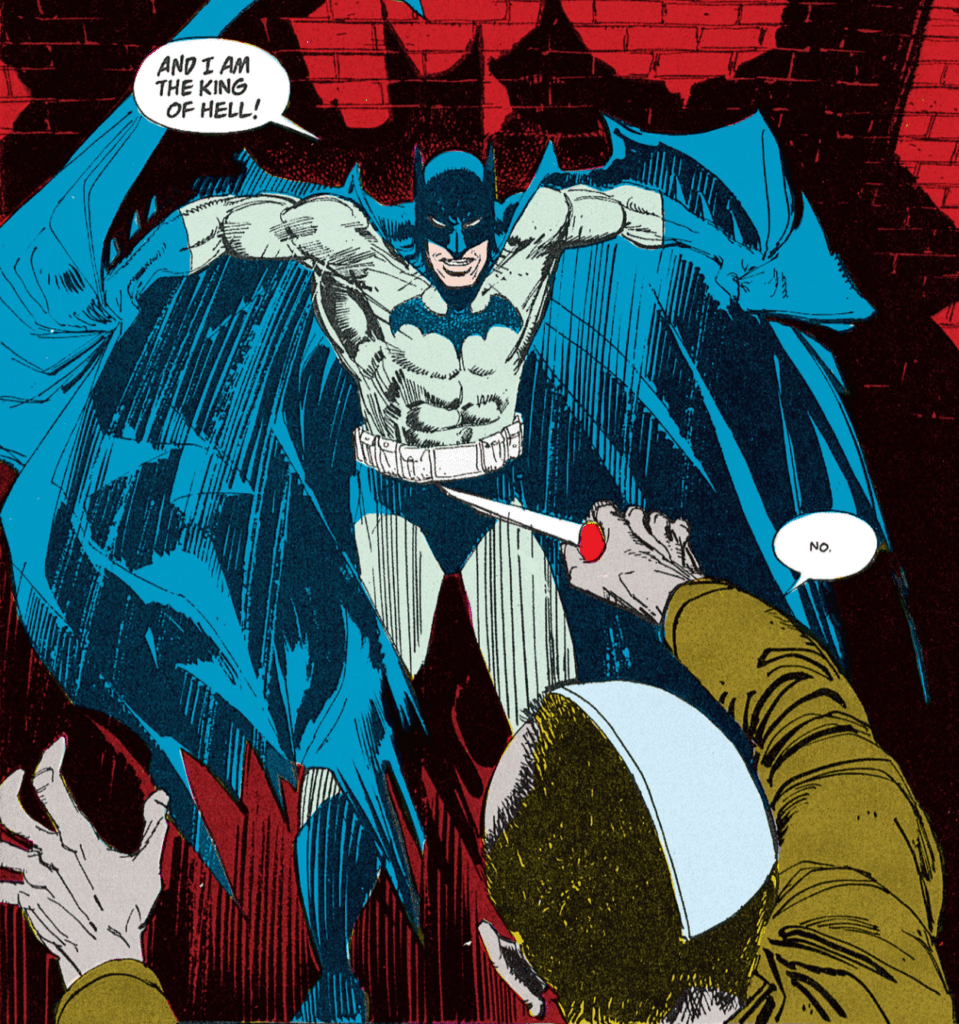
A NOT SO DELUXE EDITION
Batman: Gothic Deluxe Edition was released for the storyline’s 25th anniversary. Yet, there a more than a few negatives. It seems that Buccellato’s colors take a hit with them feeling washed out. Much like the recent Justice League: A New Beginning TPB, it looks like it was printed on glossy paper. The thing is, comic art from the ’80s and early ’90s doesn’t work well with this paper. The glossy paper makes the colors look blown out while killing some of the lighter lines from the artist. The colors don’t take as much of a hit as other reprints, yet when comparing to the original print and issues on the DC Universe app, it’s noticeable.
On a weirder note, some of the pages are cut short. It’s not to an extent where you’ll notice it, but this fact is weird. What makes these clipped pages worse is how the Deluxe Edition is a larger format Hardcover. The larger format works beautifully for Batman: Gothic, yet the clipped pages feel weird. Included in the Deluxe are Morrison’s original synopsis notes for each issue, except issue one. It’s nice that issue #2-5’s notes are included, but why not the first issues?
Nonetheless, Batman: Gothic Deluxe Edition includes one fantastic extra; Grant Morrison’s original sketch of the death trap. On a final note: the Deluxe Editions cover doesn’t measure up to the original TPB. The original fits the interior art better while catching your eyes.


BATMAN: GOTHIC 30 YEARS LATER
Looking back at Batman: Gothic and the stories following, Morrison’s tale never seems to be referenced in media or other comics. Nonetheless, that doesn’t take away how elegantly he and the team behind the story did. Despite a moment with hard to read lettering, you’ll finish the fiver-parter wondering way it isn’t spoken of more. Every element brought forth is seamlessly woven into the fabric of Gotham and Batman’s history. Meaning, even though it may not be referenced again, it all happened.
Plus, themes present here are brought forth in his legendary Batman run later on. His work here and Arkham Asylum: A Serious House on a Serious Earth can be seen as his building stones for the future.
We end with a simple quote from Batman: Gothic’s final panel.
